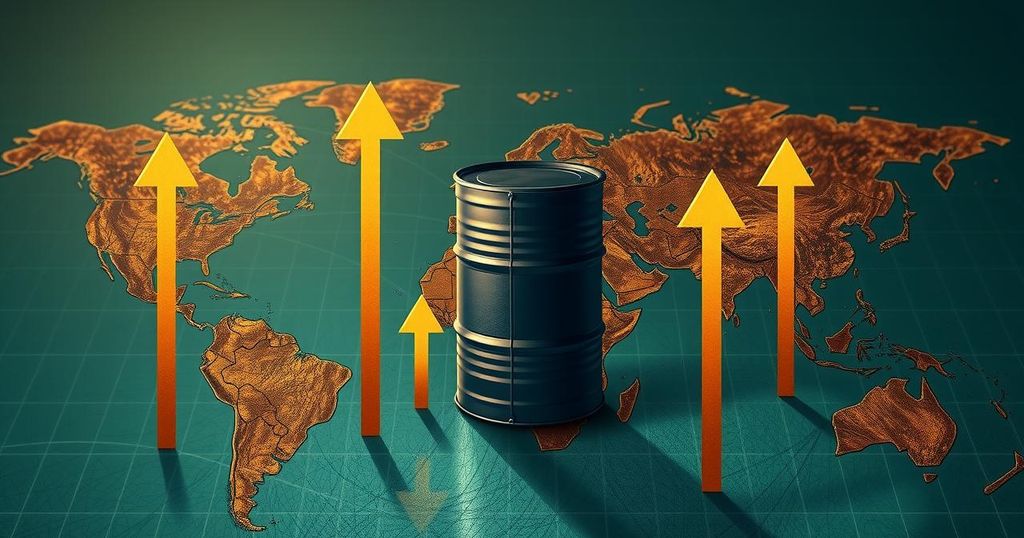Oil Prices Fluctuate amid Geopolitical Tensions and Economic Indicators

Oil prices rose slightly, supported by Middle East tensions and China’s stimulus plans. Brent futures increased to $71.24, while U.S. crude reached $67.72. Analysts noted the impact of U.S. strikes in Yemen and positive retail data from China. However, ongoing concerns over global demand and U.S. tariffs could limit future gains.
On Tuesday, oil prices experienced a marginal increase due to multiple factors, including instability in the Middle East and China’s recent stimulus plans. Despite these supportive elements, concerns regarding global growth, U.S. tariffs, and ongoing ceasefire discussions between Russia and Ukraine tempered further gains. Brent futures rose by 17 cents to $71.24 a barrel, while West Texas Intermediate crude saw a 14-cent increase, reaching $67.72 a barrel.
According to ING analysts, “Along with U.S. strikes on the Houthis in Yemen, several factors provided support to the market.” The Chinese government recently announced measures aimed at rejuvenating domestic consumption, including income boosts and childcare subsidies. Additionally, data released indicated stronger-than-expected retail sales and fixed asset investment growth in China.
The latest economic figures from China suggest that while retail sales growth accelerated during January and February, manufacturing output declined, and the urban unemployment rate surged to its highest level in two years. Furthermore, China’s crude oil throughput increased by 2.1% year-on-year in January and February due to new refinery operations and seasonal travel.
President Donald Trump’s commitment to continue U.S. military action against Yemen’s Houthis, unless they cease attacks in the Red Sea, also lent support to oil markets. Conversely, the Israeli-Palestinian conflict escalated, with Israeli air strikes in Gaza reportedly resulting in the deaths of at least 200 people, further complicating the geopolitical landscape.
Concerns about oil demand persist, notably with the OECD predicting that tariffs implemented by Trump could adversely affect economic growth in the U.S., Canada, and Mexico, thereby impacting global energy demand. Robert Rennie from Westpac expressed apprehension, stating, “With global supply surging and tariffs and trade wars set to hit global demand, we remain of the view that prices will head lower and eventually reach the mid $60s.”
In the context of global supply, Venezuela’s PDVSA has outlined scenarios suggesting it will sustain production and exports in its partnership with Chevron, even after the expiration of the U.S. company’s license. Additionally, discussions between President Trump and Russian President Vladimir Putin regarding the Ukraine conflict have gained attention, with analysts noting that any potential peace agreement could lead to eased sanctions and the reintroduction of Russian crude supplies into the global market, which may affect price dynamics.
In summary, oil prices have shown slight gains due to geopolitical instability and China’s stimulus measures, despite overarching concerns about global economic growth influenced by tariffs and political events. Analysts remain cautious about future price movements, predicting potential declines. As the market navigates complex dynamics, fluctuations in supply and demand will continue to play a pivotal role in shaping oil price trajectories.
Original Source: ina.iq








